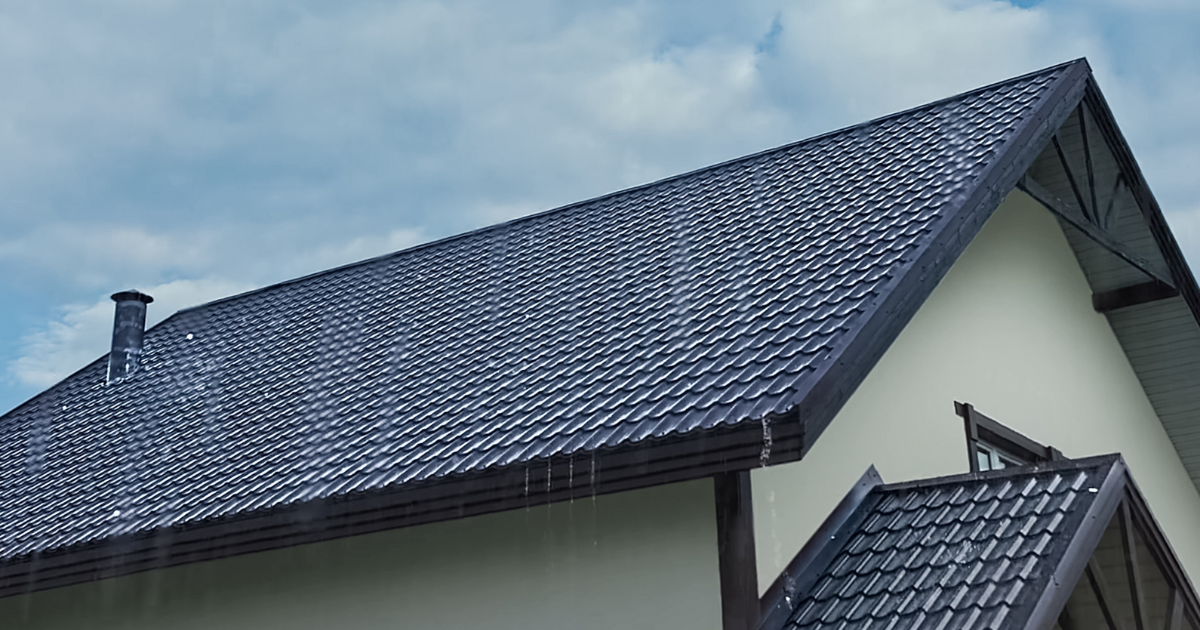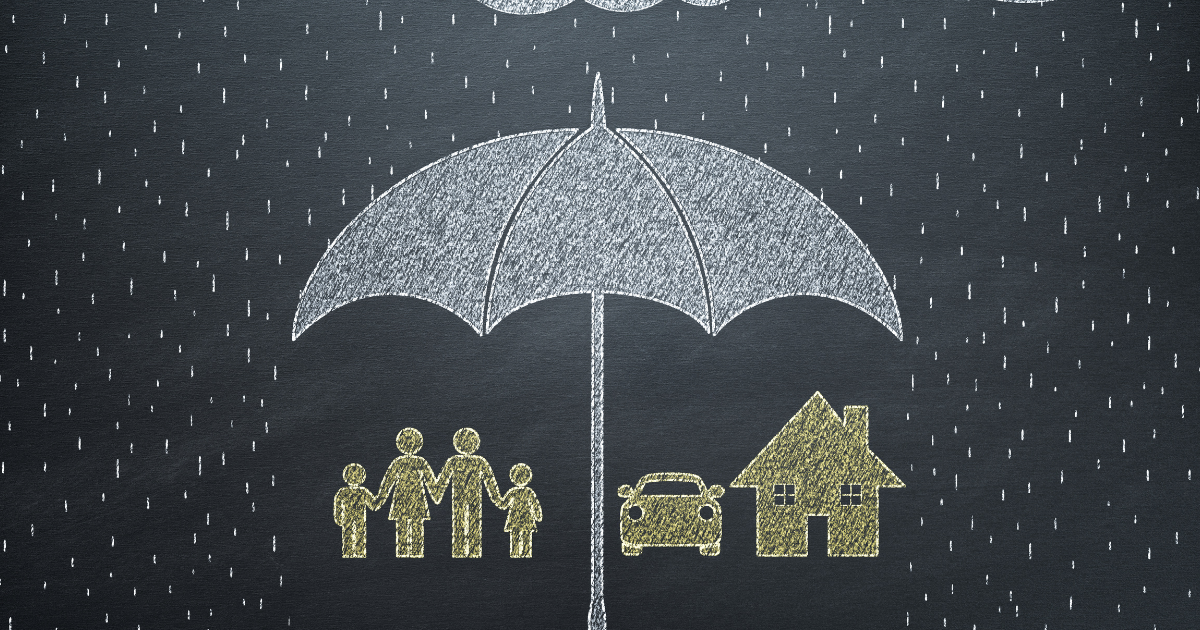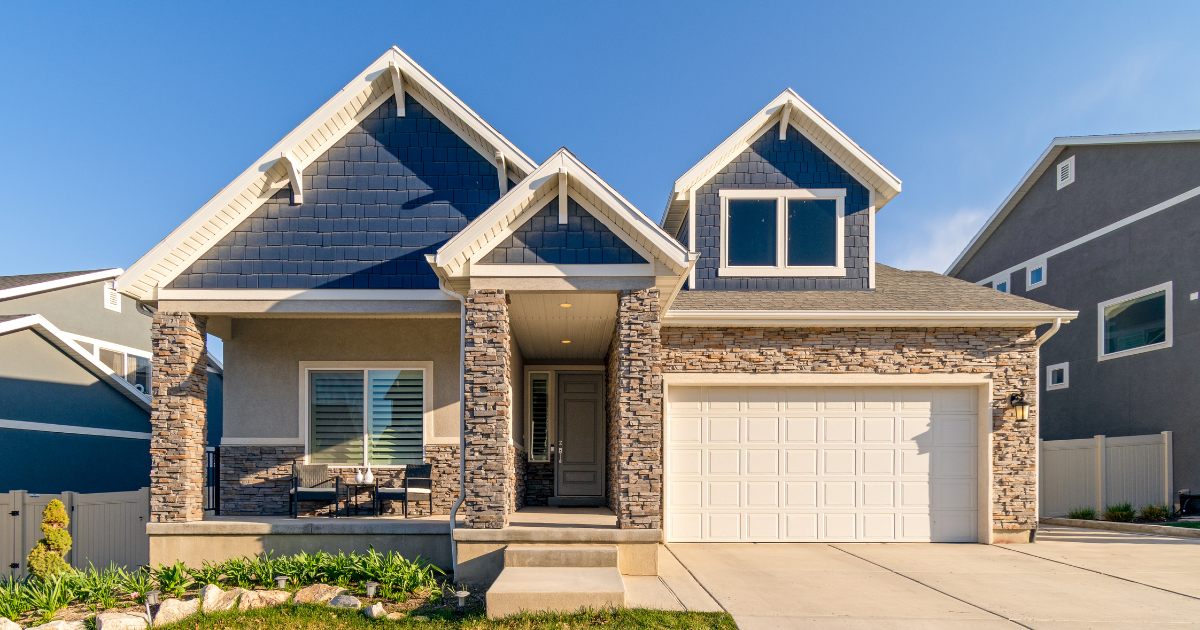When it comes to protecting your home, standard homeowners insurance covers a lot—but not everything. One of the most critical and often misunderstood gaps in coverage is flooding. Many homeowners are shocked to learn their policy doesn’t cover flood damage until it's too late.
At CapCenter, our in-house insurance team helps clients avoid surprises by shopping policies across 30+ top-rated carriers to ensure the right coverage at the right price. If you're unsure whether flood insurance makes sense for your situation, we can help. Get a fast free quote or speak directly with a CapCenter insurance advisor.
In this article, we’ll walk through what flood insurance covers, when you might need it, and how to determine whether it’s worth the investment.
What Is Flood Insurance?
Flood insurance is a separate policy that specifically covers damage caused by flooding—defined by the Federal Emergency Management Agency (FEMA) as “an excess of water on land that is normally dry.” This could include:
- Overflowing rivers or lakes
- Heavy rainfall leading to surface water accumulation
- Storm surges from hurricanes
- Snowmelt
- Blocked storm drains causing neighborhood flooding
What matters most is that the water touches the ground before entering your home. If a pipe bursts inside your home or your water heater fails, that’s typically covered by homeowners insurance—not flood insurance.
Flood insurance policies are most commonly offered through the National Flood Insurance Program (NFIP), though private insurers also offer coverage, sometimes with more flexibility or higher limits.
What Does Flood Insurance Cover?
A standard NFIP flood insurance policy includes two types of coverage:
1. Building Property Coverage
This protects the physical structure of your home and its foundation, including:
- Electrical and plumbing systems
- HVAC systems (heating and air conditioning)
- Water heaters and furnaces
- Appliances (refrigerators, stoves, built-ins)
- Permanently installed carpeting over unfinished floors
- Detached garages (limited coverage)
2. Personal Property Coverage
This protects your belongings, such as:
- Furniture
- Clothing
- Electronics
- Washers and dryers
- Portable appliances
Personal property coverage is optional but strongly recommended. Keep in mind that some high-value items, like artwork or collectibles, may have limited reimbursement amounts unless specifically scheduled on a separate policy.
Flood insurance does not typically cover:
- Temporary housing if your home is uninhabitable
- Landscaping, decks, patios, or fences
- Damage to your car (covered by auto insurance if you have comprehensive coverage)
- Mold or mildew damage that could have been prevented
Do I Need Flood Insurance If I'm Not in a High-Risk Zone?
This is one of the biggest misconceptions about flood insurance.
FEMA designates certain areas as Special Flood Hazard Areas (SFHAs), also known as high-risk zones. If you buy a home in one of these zones and use a federally backed mortgage (like a conventional, FHA, or VA loan), flood insurance is required by your lender.
But here’s the kicker: More than 25% of flood claims come from homes outside high-risk areas. These lower-risk zones are typically labeled as “moderate” or “low” risk (Zones B, C, or X on FEMA maps), and while insurance isn't required, it’s often a smart decision—especially if your area is prone to heavy rain, poor drainage, or nearby creeks and streams.
Climate change has also made flooding less predictable. We’ve seen more "100-year storms" happen far more frequently than expected, and FEMA maps don’t always reflect the most recent weather patterns or development changes.
If you’re in a newer neighborhood or live near urban development, increased stormwater runoff can lead to unexpected flooding—even if your home isn’t historically considered at risk.
How Much Does Flood Insurance Cost?
The cost of flood insurance depends on several factors:
- Location: Homes in high-risk flood zones will have higher premiums
- Elevation: Homes elevated above base flood elevation may qualify for lower rates
- Coverage limits: Higher limits = higher premiums
- Deductible: A higher deductible can lower your premium
- Building characteristics: Foundation type, number of floors, and occupancy all matter
- Source of policy: Private insurers may offer different pricing than NFIP policies
On average, NFIP premiums can range from $400 to $1,500+ per year, but in high-risk zones or coastal areas, costs may be significantly higher. CapCenter’s insurance team helps clients compare both NFIP and private carrier options to find the best rate and coverage based on your unique risk.
Flood Zones Explained: What Zone Am I In?
To understand your risk, you need to know your FEMA flood zone. Here’s a quick breakdown:
- Zones A and AE: High-risk. Mandatory insurance if you have a federally backed mortgage.
- Zone V: High-risk coastal areas with storm surge risk. Often higher premiums.
- Zone X (shaded): Moderate risk. Insurance not required but recommended.
- Zone X (unshaded): Minimal risk, but flooding is still possible.
You can check your zone using FEMA’s Flood Maps. However, FEMA’s maps don’t always reflect recent development, drainage changes, or climate shifts—so don’t rely on them alone. A CapCenter insurance advisor can help you interpret your zone and assess whether flood insurance makes sense for your home.
What Happens If I Don’t Have Flood Insurance?
Without flood insurance, any damage caused by flooding must be paid out-of-pocket. Homeowners insurance will not cover:
- Floor damage due to rising water
- Foundation erosion
- Flooded basements
- Mold growth from storm flooding
- Electrical system repairs caused by water intrusion
Federal disaster aid may be available—but it’s not guaranteed and often comes in the form of low-interest loans, not grants. And even then, those funds typically fall short of what it costs to fully repair or rebuild a home.
If you're in a moderate- or high-risk area, going without flood insurance could be financially devastating. One inch of water in a 2,000-square-foot home can cause over $25,000 in damage, according to FEMA.
What If I Live in a Condo or Townhouse?
If you’re part of a condo or HOA community, check to see what the master policy covers. Often, it protects the building’s structure but not your interior unit or personal belongings. In that case, individual flood insurance may still be a wise investment.
CapCenter’s insurance advisors are experienced in reviewing HOA and condo association policies and can help you determine what additional protection, if any, you need.
Is Flood Insurance Required for Refinancing?
Yes—if your home is located in a high-risk flood zone and you're refinancing with a federally backed loan, lenders will require proof of flood insurance. This applies to both new purchase loans and refinances.
CapCenter helps streamline the refinance process, and we verify flood zone status early in the loan review. If insurance is required, our team can help you quickly secure the right policy—often saving you time and money compared to going it alone.
Best of all, CapCenter refinances come with ZERO Closing Costs, so more of your money stays in your pocket where it belongs. See today’s refinance rates and explore how much you could save with us.
Can Flood Insurance Be Bundled?
Yes! While NFIP policies must be purchased separately, many private insurers allow you to bundle flood insurance with your home or auto policy. At CapCenter, our in-house insurance team works with over 30 carriers to bundle policies wherever possible—often resulting in average savings of 25% when bundling home and auto coverage.
If you’re unsure whether your current coverage is enough, our advisors can walk you through the options, compare costs, and make sure your biggest investment—your home—is protected from every angle.
How to Get Flood Insurance with CapCenter
Getting the right coverage doesn’t have to be complicated or expensive.
Here’s how CapCenter makes it easy:
- Free Coverage Review – We assess your existing policy to identify gaps.
- Flood Zone Check – We review FEMA data and risk indicators beyond just the flood maps.
- Carrier Comparison – We shop both NFIP and private insurers to find the best coverage and rate.
- Bundle Options – We look for opportunities to save by bundling your home, auto, and flood insurance.
- Local Expertise – We know the neighborhoods we serve—because we live and work in them too.
Whether you're buying a home, refinancing, or simply want better coverage at a better price, our team is here to help.
Final Thoughts: Is Flood Insurance Worth It?
If you’re asking the question, it’s worth exploring the answer more deeply.
Floods are the most common and costly natural disasters in the U.S.—and homeowners insurance won’t protect you. Even if you're not in a high-risk zone, that doesn’t mean you're in a no-risk zone.
With CapCenter’s insurance team on your side, you can get peace of mind and protection without overpaying. We’ll help you assess your risk, explain your options, and secure coverage that fits your budget.
FAQs
Is flood insurance tax deductible?
If you own a rental property or use your home for business purposes, flood insurance may be deductible as a business expense. For primary residences, it's generally not deductible unless part of a casualty loss during a federally declared disaster.
Can I buy flood insurance at any time?
Yes—but NFIP policies usually have a 30-day waiting period before coverage begins. Private insurers may offer shorter waiting periods. Don’t wait until a storm is coming.
Will my mortgage lender tell me if I need flood insurance?
Yes, if your home is in a high-risk zone. But if you’re outside those zones, the choice is yours—and many homeowners opt in for peace of mind.




